
| Publisher: | Astra House | |
| Genre: | Short Stories (single author), Feminist, General, Fiction, LGBTQ+ | |
| ISBN: | 9781662603020 | |
| Pub Date: | May 2025 | |
| Price: | $26 |
| Starred | Fiction |
by Lori Ostlund
The nine short fictions in Are You Happy?, the third book by Lori Ostlund (The Bigness of the World), form a stunning investigation into how violence and family dysfunction reverberate.
"The Peeping Toms" and "The Stalker" are a knockout pair featuring Albuquerque lesbian couples under threat by male acquaintances. The typical protagonist throughout is a writing professor of Scandinavian heritage. In "Just Another Family," Sibyl, back in Minnesota for her father's funeral, finds her childhood bedroom cluttered with Bibles and rifles. Anecdotes the family spins as humorous--such as her mother putting her in the oven when she wouldn't stop crying--reveal hidden trauma.
Characters are haunted by loss and grapple with moral dilemmas. In the title story, Phil's comfortable home life with Kelvin in San Francisco can't outweigh memories of a long-ago plane crash. In "The Bus Driver," Clare ponders telling the police that a popular high school basketball coach's death, presumed accidental, may have been revenge for sexual misconduct involving her best friend.
"Aaron Englund and the Great Great," a prequel to Ostlund's After the Parade, impresses with its third-person limited re-creation of a five-year-old's viewpoint. Each story has the complexity and emotional depth of a novel; endings are often chillingly inconclusive. Freedom versus safety for queer people is a resonant theme in this engrossing collection ideal for Alice Munro and Edward St. Aubyn fans. Happiness might be out of reach for these characters dealing with family trauma, but tracing the way from there to here offers closure. --Rebecca Foster, freelance reviewer, proofreader and blogger at Bookish Beck
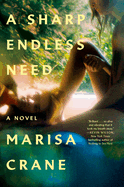
| Publisher: | The Dial Press | |
| Genre: | Coming of Age, Literary, Lesbian, Fiction, LGBTQ+, Sports | |
| ISBN: | 9780593733646 | |
| Pub Date: | May 2025 | |
| Price: | $27 |
| Fiction |
by Marisa (Mac) Crane
Marisa (Mac) Crane's second novel, A Sharp Endless Need, is a propulsive, perfectly crafted coming-of-age story centered on basketball and queer sexuality. With razor-honed prose, Crane (I Keep My Exoskeletons to Myself) offers authentic descriptions of teen angst and young love as well as exemplary sports writing, and a few memorable sex scenes.
Crane's protagonist, Mack, is a star point guard and the only one at her small-town Pennsylvania high school who is Division-I bound. Between her junior and senior seasons, her beloved but troubled father dies, and on the heels of this trauma, a new girl transfers to the team: Liv is being scouted by the same schools as Mack, and the two are instantly inseparable. Their on-court chemistry is transcendent; off-court, they share good times but are also nearly immobilized by a desire that both are at great pains to conceal. Mack's senior year is marked by larger-than-average difficulties: grieving her father, struggling with her distant, disengaged mother, playing hard with drugs and alcohol, and grappling with a sexuality that feels firmly forbidden in her community. The basketball scholarship she's headed for feels imperative.
Mack's first-person voice is written from a distance of some years, a voice of wisdom looking back on her high school days. This perspective is one of the novel's strengths. The best sports writing evokes not only movement, sensory detail, and skill, but passion, and Crane has a firm grasp on these facets. As Mack's final season nears its close, her relationship with Liv, her college decision, and more hinge upon a handful of choices and impactful moments. A Sharp Endless Need is unforgettable. --Julia Kastner, blogger at pagesofjulia
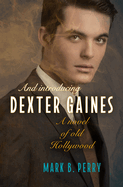
| Publisher: | Amble Press/Bywater Books | |
| Genre: | 20th Century - Post-World War II, Mystery & Detective, Amateur Sleuth, Romance, Fiction, Gay, LGBTQ+ - Bisexual, Historical, LGBTQ+ | |
| ISBN: | 9781612943138 | |
| Pub Date: | May 2025 | |
| Price: | $23.95 |
| Fiction |
by Mark B. Perry
If Golden Age movie director Douglas Sirk had turned to writing censor-flouting fiction, he might have come up with And Introducing Dexter Gaines. The novel's actual author, Emmy-winning TV writer Mark B. Perry, has spun a deliciously frothy, unrepentantly melodramatic tale about the Old Hollywood star factory and the celluloid closet.
The novel begins in 1994, with narrator Daniel Root living in humble circumstances in San Jose, Calif. While watching TV, he learns of the death of Milford Langen, who made his name as a producer at 20th Century Fox in the 1940s and '50s. The narrative jumps back in time to the last day of 1951, when dashing 21-year-old Tyler, Tex., native Daniel, who has just moved to Los Angeles to chase stardom, is working as a waiter at Langen's New Year's Eve party. That night changes Daniel's life, but not in the way he is expecting.
And Introducing Dexter Gaines toggles between the 1950s and the 1990s as it teases the question: Why did Daniel leave Hollywood? The story, which features walk-ons by a dozen-odd Old Hollywood A-listers, could be slotted into several Golden Age movie categories: psychodrama, Grand Guignol, and, especially, weeper; there are enough tears shed in the novel to fill Mulholland Fountain, the site of one of the book's many skirmishes. Much of what happens in the novel--a reworking of Perry's debut, City of Whores--is preposterous by the measure of literary realism, but everything that happens is believable by the wonderfully pliable logic of melodrama. --Nell Beram, author and freelance writer
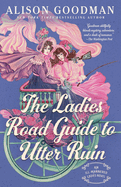
| Publisher: | Berkley | |
| Genre: | Historical - Regency, Mystery & Detective, Romance, Fiction, Historical, Women Sleuths | |
| ISBN: | 9780593440834 | |
| Pub Date: | May 2025 | |
| Price: | $19 |
| Mystery & Thriller |
by Alison Goodman
Readers who love the Regency era but are looking for a feminist, queer-friendly take on it need look no further than Alison Goodman (The Dark Days Club). The Ladies Road Guide to Utter Ruin, the second novel in Goodman's Ill-Mannered Ladies series, is a fabulous romp that handles weighty topics with grace.
Twin sisters Julia and Augusta "Gus" Colebrook, who are distinct among their upper-class peers due to their financial independence and contentment with being unmarried in their 40s, defy Regency society's strict constraints in order to aid women in distress. Their current houseguests are Lady Hester Belford and her partner, Miss Grant. Lady Hester was put into an asylum by her brother, Lord Deele, who became the head of their family when their eldest brother, Evan, was disgraced in his youth. Lord Deele disapproved of Lady Hester's love for Miss Grant. When Gus and Julia find out that Lord Deele knows they rescued Lady Hester, they need to quickly relocate her. Since Lady Hester is still frail from her incarceration, the twins call in assistance from her other brother. Evan, the black sheep of the family, is now wanted by the law. However, Evan is a very handsome outlaw, and Gus is pleased to attempt to clear his name.
Perfectly plotted and both funny and sad, The Ladies Road Guide to Utter Ruin is a delight. Goodman balances several storylines with skill and gives readers a glimpse into the seamier side of Regency life. Fans of Deanna Raybourn's Lady Julia Gray or Veronica Speedwell series will adore Gus and Julia. --Jessica Howard, former bookseller, freelance book reviewer
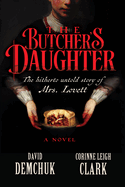
| Publisher: | Hell's Hundred/Soho Press | |
| Genre: | Horror, General, Thrillers, Fiction, Historical, LGBTQ+ | |
| ISBN: | 9781641296427 | |
| Pub Date: | May 2025 | |
| Price: | $27.95 |
| Mystery & Thriller |
by David Demchuk, Corinne Leigh Clark
A journalist draws out the grim story of the accomplice to "the Demon Barber of Fleet Street" in The Butcher's Daughter: The Hitherto Untold Story of Mrs. Lovett, a gritty Victorian thriller by David Demchuk (Red X; The Bone Mother) and debut author Corinne Leigh Clark.
Journalist Miss Emily Gibson is missing. Among her effects, the constables find a series of letters exchanged with a woman whom Miss Gibson believed may have been Mrs. Margery Lovett, hiding out in a convent instead of long since dead in Newgate Prison, as is widely thought.The woman and everyone else at the convent deny it, but as Miss Gibson pursues the truth, her correspondent reveals the events of her life. It's an account of poverty, oppression, and the macabre, graduating from the mundane violence of the butcher shop of her childhood to the doctor's house where she went into service after her father's untimely death.
Demchuk and Clark spin a hair-raising tale, marching readers toward the inevitable climax of Mrs. Lovett's narrative while also maintaining suspense about the fate of the missing journalist. It's clear that nothing good happened, but by whose hand and why? Musical aficionados should be aware that The Butcher's Daughter is set in the world of penny dreadfuls, not Stephen Sondheim, but it reaches beyond into a fully fleshed out portrait of Victorian slums. And if readers are reminded of other gory 19th-century legends, they may be on to something. Demchuk and Clark will keep them on the edge of their seats. --Kristen Allen-Vogel, information services librarian at Dayton Metro Library

| Publisher: | Tor Books | |
| Genre: | Dark Fantasy, Fantasy, Contemporary, General, Fiction, LGBTQ+ | |
| ISBN: | 9781250835017 | |
| Pub Date: | May 2025 | |
| Price: | $28.99 |
| Starred | Science Fiction & Fantasy |
by Emily Tesh
Magic and hubris collide with devastating consequences as a professor attempts to keep the gears of her venerable school turning in the mature, emotionally complex dark academia fantasy The Incandescent by Emily Tesh, winner of the Hugo Award for her first novel, Some Desperate Glory.
Dr. Saffy Walden lives a life no different than that of any other school administrator: there's not as much time to teach as she would like, far more meetings than she would prefer, and the constant toil of keeping the school's magical wards in fit shape to fend off any demons who might want to snack on the student body. Well, perhaps her position as Director of Magic at the Chetwood School is a bit different than the average school administrator. Her 14-hour workdays don't leave much time for hobbies, but work-life balance is no priority since "her career was her life."
Walden balances safety concerns with students' educational needs, which leads her to lock horns with Laura Kenning, the school's gorgeous head demon-hunter. Luckily Walden is one of the world's finest magicians. Bring on the demon that possesses the photocopier in the workroom, the arrogant legacy student, the piles of paperwork, because she has everything under control. Unfortunately, while demons are formidable, no one is as potentially dangerous as a magician who believes she has everything under control.
Fans of Naomi Novik's Scholomance series or Leigh Bardugo's Alex Stern novels, as well as any readers who have wondered what the workday of a Hogwarts professor might look like, should find this story a veritable cornucopia of dark delight. --Jaclyn Fulwood, blogger at Infinite Reads
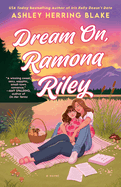
| Publisher: | Berkley | |
| Genre: | Romantic Comedy, Romance, Fiction | |
| ISBN: | 9780593815991 | |
| Pub Date: | May 2025 | |
| Price: | $19 |
| Romance |
by Ashley Herring Blake
Ashley Herring Blake (Make the Season Bright) returns with another heart-fluttering sapphic romance sure to enthrall readers. Set in fictional Clover Lake, N.H., Dream On, Ramona Riley is a charming small-town-meets-Hollywood romance featuring a fat protagonist and the diverse supporting cast--characters of different ages, gender expressions, and body sizes--that fans of Blake's previous works have come to expect.
Ramona Riley, who has lived in Clover Lake all her life except for a short stint at the Rhode Island School of Design, works at the diner where Dylan Monroe, Hollywood's bad girl, is filming a big-budget romance (based on the in-world novel from Blake's earlier work Iris Kelly Doesn't Date). When the women connect, they learn they have been pining for each other since they first met as young teens and exchanged a kiss.
Dream On, Ramona Riley is full of sweet and tender moments that are matched with plenty of the sexiness Blake fans are familiar with. Without taking focus away from the couple, Clover Lake feels like the best summer vacation town, full of delightful small businesses and people. Blake excels at tough, emotional conversations, and this novel is no exception as the couple navigates family troubles, public image, and dreams set aside. Blake's longtime readers will enjoy a glimpse at past characters, and new readers will love the heart, humor, and drama.
Perfect for fans of contemporary rom-coms such as Jasmine Guillory's Flirting Lessons or Alexandra Kiley's Kilt Trip, Dream On, Ramona Riley will make readers fall in love with Clover Lake. --Alyssa Parssinen, freelance reviewer and former bookseller

| Publisher: | Algonquin Books | |
| Genre: | Comics & Graphic Novels, Gay, LGBTQ+ | |
| ISBN: | 9781643755120 | |
| Pub Date: | June 2025 | |
| Price: | $32 |
| Starred | Graphic Books |
by Michael Curato
Acclaimed children's author/illustrator Mike Curato (Little Elliot, Big City; Flamer) delivers his debut for adults: Gaysians, a poignant graphic novel about a young East Coast transplant to Seattle in 2003, where he finds a welcoming community of gay Asians. Curato opens with introductions to his primary players--newly out AJ at his first gay bar; Korean adoptee and gamer John; lothario Steven; and activist, seamstress, drag queen K.
For AJ, spilling his drink on K turns into a fortuitous entry to gay Seattle life, which is like "nothing I've ever experienced before." Biracial Filipino AJ left upstate New York to escape his violent, unaccepting father. His plight triggers K's maternal instincts, and she connects him to work and subsidized housing in Seattle's Capitol Hill "gayborhood." Most importantly, she invites him out for dim sum, where he's warmly welcomed into the "Boy Luck Club."
While revealing AJ's coming-of-age, Curato also provides intimate windows into the lives of AJ's found family. Curato writes with open empathy, developing each of his characters with nuance and complexity. He favors mostly monotone (blues) and duotone (blues and magentas) washes, with glimpses of the past muted in black, white, and grey; full-color is reserved for spectacles and the spectacular, including AJ's first Pride parade and the Lunar New Queer Festival.
"We are not a monolith," Curato writes in his afterword, "and it would be impossible for me to write a story that captures the essence of every queer Asian person." His notable gift here is to discover a myriad of gay Asian stories, with the heartfelt invitation to "add to the story [and] create volumes together." --Terry Hong

| Publisher: | Top Shelf Productions | |
| Genre: | Contemporary Women, Romance, Lesbian, Comics & Graphic Novels, LGBTQ+ | |
| ISBN: | 9781603095570 | |
| Pub Date: | May 2025 | |
| Price: | $19.99 |
| Starred | Graphic Books |
by James Albon
Graphic novelist James Albon goes romantically global in Love Languages, a polyphonic romance featuring two expats of diverse backgrounds and their Parisian meet-cute beginning. Sarah, from London, is a self-described "slave to the capitalist grind" who aspirationally carries around 99 Ways to Re-energise and Be Your Best Incarnation in her bag. One morning, overzealous street mimes cause her to tumble, but the incident becomes the shake-up catalyst she didn't know she needed that transforms her life. Watching the scene with alarm is Ping from Hong Kong, working as an au pair. Their serendipitous meeting the next day, sharing English, French, and Cantonese, leads to a coffee and pastry--and, for Sarah, becomes a reminder of a Hong Kong trip so sweet that she's inspired to return to a long-neglected Cantonese language app. Another chance encounter, this time at the Louvre, progresses to a promising connection. Nurturing their polyglot conversations just might lead to true love.
Albon opens with a delightfully clever title page demonstrating the power of languages to both separate and connect: here, a French-speaking writer enthusiastically explains the narrative about to be revealed, while Sarah blushingly admits she can't understand. The story that unfolds--Sarah's--is all about what gets lost and found in leaving, attempting, adopting various languages. As an artist, Albon employs gorgeously riotous color for the everyday life that Sarah hasn't quite learned to enjoy. Initially shrouded in blues and browns, Sarah recognizes bright-yellow-jacketed Ping as a beacon ready to light her way out of drudgery and isolation. --Terry Hong
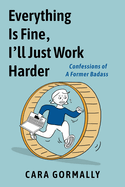
| Publisher: | Street Noise Books | |
| Genre: | Biography & Memoir, Contemporary Women, Public Policy, Nonfiction, Social Services & Welfare, Lesbian, Sexual Abuse & Harassment, Social Science, Comics & Graphic Novels, LGBTQ+, Political Science | |
| ISBN: | 9781951491376 | |
| Pub Date: | April 2025 | |
| Price: | $19.99 |
| Graphic Books |
by Cara Gormally
Cartoonist Cara Gormally, who's also a biology professor and researcher, resonantly transforms their journey from debilitating trauma to radical acceptance into their debut graphic memoir, Everything Is Fine, I'll Just Work Harder: Confessions of a Former Badass. Back in those "badass" days, Gormally woke early, ran many miles while making endless mental lists, then dashed to university to teach, direct projects, and continue research, only to continue working at home before going to bed late with a book. "On a day that began like any other day," that hamster wheel of achievement sputtered when their rapist sent a friend request. Their tenacious attempts to be their "regular badass self" proved impossible. Excuses of denial--"It was years ago," "I'm fine," "This shouldn't affect me"--finally culminated with a lifesaving recommendation: "Find a trauma therapist." Even when "the process felt neverending," Gormally persevered to "finally enjoy being and becoming."
Gormally works powerfully in simple black-and-white line drawings enhanced with shades of blue. When emotions overwhelm, the color deepens to resemble torrential water that threatens to flood the page, spreading over and breaking through borders and panels. Gormally cleverly depicts their head as an untethered balloon--detached and floating further away from their body--whenever they're caught in the vortex of must-dos, ignoring everything and everyone, including and especially their own needs. "The me who wrote this book is already a past-me existing only in my heart now," Gormally reveals in their author's note. Their survival and recovery undoubtedly provides both balm and inspiration that others, too, might reclaim their lives. --Terry Hong
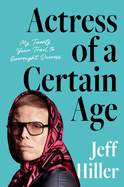
| Publisher: | Simon & Schuster | |
| Genre: | Biography & Autobiography, Entertainment & Performing Arts, Memoirs, LGBTQ+ | |
| ISBN: | 9781668031858 | |
| Pub Date: | June 2025 | |
| Price: | $28.99 |
| Starred | Biography & Memoir |
by Jeff Hiller
In terms of celebrity, Jeff Hiller's name may not carry the same gravitas as Demi Moore or Taraji P. Henson. His unforgettable face might resurface vague memories of a Pilgrim in a steady Snickers campaign, a flight attendant on 30 Rock, or a naked man bothering Ricky Gervais in the film Ghost Town. One might describe Hiller's acting career as niche, but in Actress of a Certain Age, the comedian delivers a performance of a lifetime, nimbly folding tenderness and vulnerability into a riotously disarming memoir about his passion for performance.
Hiller got lucky with ferociously supportive parents, but standing more than six feet tall and weighing 200 pounds in the sixth grade, with "a gay lisp" and "a nervous and girlish giggle," he was constantly tormented with the F-slur and other forms of bullying at school. Church was his haven, however, and its theatrical elements gave Hiller his first taste of dramaturgy. For a time he considered entering the ministry, but deep down he really "just felt called to be a singing, dancing, wocka-wocka showman of God. Pastor Charo! 'In the name of God, let's cuchi-cuchi!' " So, after a rather cursed experience as a social worker, he decided to pursue his true purpose, doggedly running the humbling gauntlet that is showbiz.
As he documents his gradual ascent, through improv groups and commercial gigs before landing his starring role as Joel on the endearing HBO comedy series Somebody Somewhere, Hiller is a generous and entertaining storyteller. Actress of a Certain Age distills the feel-good, laugh-till-you-cry reminiscences of a sweet, silly, and thoroughly lovable man establishing the career of his dreams. --Dave Wheeler, senior editor, Shelf Awareness

| Publisher: | Putnam | |
| Genre: | Biography & Autobiography, Women, Rich & Famous, Artists, Architects, Photographers, History | |
| ISBN: | 9780593716663 | |
| Pub Date: | May 2025 | |
| Price: | $32 |
| Biography & Memoir |
by Laurence Leamer
Laurence Leamer has developed a literary specialty: chronicling the lives of the women behind manipulative male artists. On the heels of Capote's Women and Hitchcock's Blondes comes Warhol's Muses: The Artists, Misfits, and Superstars Destroyed by the Factory Fame Machine, which will burnish Leamer's deserved reputation as a master of the upmarket tawdry.
In the mid-1960s, pop artist Andy Warhol entered the world of filmmaking and needed attractive faces to light up the screen. The bottomlessly researched Warhol's Muses spotlights Baby Jane Holzer, Edie Sedgwick, Viva, Nico, Candy Darling, and five other women who were part of the stable of novice actors Warhol called his "Superstars." Leamer's biographical sketches present the featured muses as disproportionately troubled and vulnerable, and while they're not all tragic figures, the book highlights instances of their drug-abetted self-destruction. Meanwhile, Warhol comes across as someone quite different from the soft-spoken force for good he's often made out to be; here he's something of a calculating social climber (quite a few of the Superstars were women of means). As Leamer sees it, the Superstars "softened [Warhol's] queerness for public consumption and brought him a dose of added glamour, even respectability."
Leamer makes a solid case that, while many of Warhol's women have name recognition, "their contribution to the artistic world they helped to define--and their own artistic ambitions, personal struggles, and occasional triumphs--have been largely overlooked." Warhol's Muses helps redress the injustice. It's a scintillating read that marries two improbable bedfellows: the feminist and the scandalous. --Nell Beram, author and freelance writer
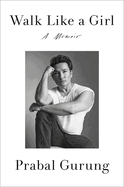
| Publisher: | Viking | |
| Genre: | Biography & Autobiography, Fashion, Asian & Asian American, Memoirs | |
| ISBN: | 9780593493274 | |
| Pub Date: | May 2025 | |
| Price: | $32 |
| Biography & Memoir |
by Prabal Gurung
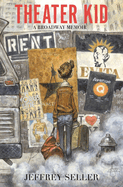
| Publisher: | Simon & Schuster | |
| Genre: | Biography & Autobiography, Theater, Entertainment & Performing Arts, Memoirs, Broadway & Musicals, Performing Arts | |
| ISBN: | 9781668064184 | |
| Pub Date: | May 2025 | |
| Price: | $29.99 |
| Biography & Memoir |
by Jeffrey Seller
Broadway producer Jeffrey Seller was a driving force behind several unexpectedly triumphant out-of-left-field musicals. In Theater Kid: A Broadway Memoir, he describes with candor and flair a life that seemed as unlikely to be a smashing success as those shows were.
Seller was born in 1964 and grew up in Oak Park, Mich., "the poor enclave in a rising Jewish suburb" north of Detroit. His parents were combative and frequently on the brink of divorce; his father largely left it to his wife to support the family with hourly wage work. When Seller was in fourth grade, he was cast in his Sunday school's Purim production; while in the play, he felt "filled with purpose for the first time." He stuck with the performing arts--at school and through community productions--and came to believe that through the theater, "I will get out." He did, and he has the Tony wins to prove it.
Theater Kid is told in the present tense in three acts, and some of Seller's lean, rapid-fire recollected dialogues could pass for excerpts from a polished script. He has a light touch, whether he's contemplating being gay and adopted or engaging in Broadway-insider wheeler-dealing. A reader needs no prior familiarity with Rent, Avenue Q, In the Heights, or Hamilton, all of which Seller had a hand in, to enjoy chapters devoted to the origins of these against-the-odds hits. For each show, Seller has written a gripping underdog story, which is another way to describe his memoir. --Nell Beram, author and freelance writer
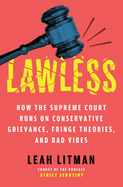
| Publisher: | One Signal/Atria | |
| Genre: | Law, Judicial Power, General, Commentary & Opinion, Courts, Political Science | |
| ISBN: | 9781668054628 | |
| Pub Date: | May 2025 | |
| Price: | $29.99 |
| Political Science |
by Leah Litman
Deploying humor and pop-culture references to drive home its persuasive message, Lawless by former U.S. Supreme Court clerk Leah Litman is a call to action for those reeling from Supreme Court decisions in such cases such as Dobbs v. Jackson Women's Health Organization and West Virginia v. EPA. To make change happen, she insists, one must first understand the court's jurisprudence.
When it comes to abortion access, voting rights, the influx of money in politics, and "temper tantrums about LGBT equality," the court is no longer an impartial interpreter of the law, asserts Litman. Rather, the highest court in the U.S., flaunting its conservative supermajority, has obliterated judicial precedent to instead align its rulings with Republican "talking points" and grievances.
Litman skillfully distills complex case law into easily digestible facts and offers helpful historical and political context for the immense power the court has accrued. A University of Michigan Law School professor and co-host of the podcast Strict Scrutiny, Litman irreverently harnesses themes gleaned from television shows such as Game of Thrones and Arrested Development and the films American Psycho and Barbie to expose flaws in the court's rulings.
Taking the long view, Litman encourages political engagement at the local level to turn the situation around at the national level. She cites the case of Kris Mayes, a Democrat who won the 2022 race for Arizona attorney general by just 280 votes, then went on to save an innocent man from an "absolutely ghoulish" Supreme Court ruling. The solution isn't stacking the courts with liberals. Rather, Litman concludes, it's about making sure "that courts do not get in the way of democracy." --Shahina Piyarali

| Publisher: | Spiegel & Grau | |
| Genre: | Nature, Biography & Autobiography, Family & Relationships, Fungi & Mushrooms, Ecology, Plants, Memoirs, Essays, LGBTQ+ | |
| ISBN: | 9781954118904 | |
| Pub Date: | May 2025 | |
| Price: | $30 |
| Nature & Environment |
by Patricia Ononiwu Kaishian
Patricia Ononiwu Kaishian's insights about the natural world and her skill in presenting them are nothing short of stunning. Forest Euphoria: The Abounding Queerness of Nature undermines the constrained, ideologically limited lens that cultural norms have imposed upon science and its exploration of nature throughout history. In Kaishian's work, the term "queer" is "a call to action, charging us to reject the many binaries that shape our current reality to the detriment of everyone."
Part of the binary that Kaishian powerfully disputes is the dominant hierarchical concept of "human exceptionalism," in which it's considered a given that anything present in the natural world exists to be in service to human beings and not as entities of their own. Kaishian credits native knowledge and her time at ESF, the Environmental Science and Forestry program at SUNY Syracuse, where she worked with fungal taxonomist Alex Weir and learned how to "decolonize" her own practice of science.
Using case studies from the natural world (corvids, fungi, eels, etc.), which she's studied throughout her development as a mycologist, Kaishian achieves something truly singular. She establishes a kaleidoscopic vision of interconnectedness that encompasses intricate webs of communication and cooperation, while acknowledging that much always remains to be discovered.
Forest Euphoria is an evocative work of profound creativity that combines scientific rigor, personal narrative, and a call for an outlook that is better, more inclusive, more true and genuinely scientific. Forest Euphoria is not just for scientists or academics; it's for anyone who cares about the future of our planet, anyone who is willing to question the assumptions that have contributed to our current environmental crisis. -- Elizabeth DeNoma, executive editor, DeNoma Literary Services, Seattle, Wash.
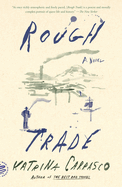
| Publisher: | Picador | |
| Genre: | General, Thrillers, Fiction, Historical, LGBTQ+ | |
| ISBN: | 9781250371867 | |
| Pub Date: | April 2025 | |
| Price: | $19 |
| Now in Paperback |
by Katrina Carrasco
Katrina Carrasco (The Best Bad Things) blends deeply researched historical fiction with riveting queer adventure in Rough Trade, the spectacular second installment of her episodic crime series about the undeniably charming antihero Alma Rosales.
It's the summer of 1888, and Alma's crew is working the Tacoma docks of Washington Territory. Their cover story is that they're stevedores, but smuggling opium is their real trade.
In the months that follow a drug bust on their ship, several new players wander onto Alma's docks and threaten the tidy little business she runs under the protective care of seductive socialite Delphine Beaumond. Among those is Bess Spencer, Alma's former partner at the Pinkerton Women's Bureau of investigators, from a lifetime ago. But the real fuse lights when dead bodies start turning up under suspicious circumstances, and with signs of injection. Alma risks a swarming police presence that could irreversibly upset the life she's only recently built for herself in Washington, after escaping tragedy elsewhere.
Carrasco writes with a brisk pace and cheeky playfulness that offset the rugged terrain and dicey stakes. Alma carries a queer and irresistible swagger as she shapeshifts into her public persona, Jack Camp, the roughest man in town. And her sexual tension with both Bess and Delphine gin up a satisfying heat. So much of the fun in this novel pivots on the divide between public and private presentations, highlighting how simple it becomes to defy the law when one's gender and sexuality are already at odds with it.
Rough Trade is an addictive treat sure to please fans of Sarah Waters and HBO's Our Flag Means Death. --Dave Wheeler, senior editor, Shelf Awareness

| Publisher: | Primero Sueno Press/Atria | |
| Genre: | Ancient, Romance, General, LGBTQ+ - General, Fiction, Historical, LGBTQ+ | |
| ISBN: | 9781668035245 | |
| Pub Date: | June 2025 | |
| Price: | $18.99 |
| Now in Paperback |
by Caro de Robertis
The tale of Eros and Psyche gets a queer update in The Palace of Eros, the lush and thoughtful novel by Caro De Robertis (The President and the Frog; Cantoras).
Psyche grows up in the shadow of her older sisters, but when she comes of age, her beauty becomes so great that her father's household is overwhelmed by suitors coming to stare at her, but not to offer marriage, because nobody wants to marry "this girl whose face and body had been scraped raw by glances from across the land." Aphrodite becomes jealous that Psyche is drawing so much attention from her. She sends her daughter, Eros, the deity of desire, who is "a woman and also, at the same time... more," to punish Psyche by making her fall in love with an unworthy man. But Eros is overwhelmed when she sees Psyche and devises a plan to make Psyche her wife instead. All Eros has to do is keep her hidden from the other gods, making sure they are never together in the light.
De Robertis adapts the Greek myth into a novel that is sensual and subversive. When Psyche can no longer tolerate the mystery of her husband's identity and she exposes her in the light, she unwittingly reveals their hidden sanctuary to the other gods. Then she doesn't only need to overcome the trials Aphrodite gives her, she and Eros must also heal their broken trust and forge the beginnings of a new world where those who defy expectations can belong. Fans of Circe by Madeline Miller and Daughters of Sparta by Claire Heywood will be enthralled. --Kristen Allen-Vogel, information services librarian at Dayton Metro Library
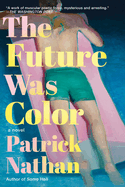
| Publisher: | Counterpoint | |
| Genre: | 20th Century - Post-World War II, City Life, Fiction, Gay, Historical, LGBTQ+ | |
| ISBN: | 9781640096998 | |
| Pub Date: | June 2025 | |
| Price: | $16.95 |
| Now in Paperback |
by Patrick Nathan
The Lavender Scare looms over the events portrayed in Patrick Nathan's exquisite second novel, The Future Was Color, like one of those unspeakable horrors that Hollywood screenwriter George Curtis conjures to threaten the lives of ordinary, freedom-loving Americans in his cheaply made science fiction flicks. George lives a meek existence in the summer of 1956, humbly tapping out new scripts in a sweltering office that he shares with two or three others, depending on who "either quit or disappeared or got blacklisted" in the stifling era of McCarthyism.
Privately, however, George is a quiet sort of renegade. A Hungarian immigrant to the United States, he has witnessed the rise of fascism and the cost of war. He longs to write something of greater political consequence than the black-and-white movies that studios lace with their pro-war propaganda. He also longs for the touch of his colleague Jack Turner. When friend and actress Madeline Morrison invites George to be a writer in residence at her Malibu estate, the opportunities for greater fulfillment begin to unfurl before him.
Nathan (Image Control; Some Hell) writes with the eloquence of a nimble mind working at the height of his powers. Gripping from the first sentence, The Future Was Color braves the atomic era with a canny allegiance to human tenderness and connection. George's story is one of resilience, and Nathan's Hollywood is sure to dazzle any readers who were captivated by Anthony Marra's Mercury Pictures Presents. Profound, life-affirming, and splendidly seductive, The Future Was Color deserves to become a new lodestar in the ever-expanding constellation of gay literature. --Dave Wheeler, senior editor, Shelf Awareness

| Publisher: | Riverhead | |
| Genre: | Friendship, Literary, Fiction, Asian American & Pacific Islander | |
| ISBN: | 9780593190036 | |
| Pub Date: | May 2025 | |
| Price: | $18 |
| Now in Paperback |
by R.O. Kwon
R.O. Kwon's second novel, Exhibit, is a searing study of art, desire, and bodily and intellectual freedom. Northern California photographer Jin Han earned notoriety for her triptychs depicting "religious people in states of worship." Given her lapsed Christian faith and her inclusion of self-portraits copying her subjects' poses, she has received hate mail and a boycott. Jin then questions her own motives: "did I, by reviving what I grieved, risk indulging in tragic kitsch?" Interspersed in the narrative are anguished letters to a God she no longer believes in.
Doubt divides Jin from her devout parents in Seoul, while sexual needs drive her and her husband, Philip, apart. In the opening scene, Jin is immediately drawn to fellow Korean American Lidija Jung, an injured ballet dancer, at a party. Lidija shares Jin's interest in BDSM, which Philip is reluctant to explore. Moreover, Philip has decided he wants a baby, but Jin prefers to remain childfree. Little surprise, then, that Jin becomes increasingly intimate with Lidija, her muse. A new project even showcases the bruises and blood from their encounters. Soon, Jin is called back to Korea when her mother is hospitalized--an incident Jin's vestigial religious mindset leads her to interpret as punishment.
Kwon's sentences are like grenades, carefully wrought and concentrated with meaning. Staccato phrasing and poetic vocabulary allow Kwon (The Incendiaries) to pack much into this intense novel's short length. Though the prose threatens to overwhelm a somewhat familiar plot, the focus on art and independence, as well as the bisexual representation, make this stand out. It's ideal reading for fans of Melissa Broder, Teju Cole, and Brandon Taylor. --Rebecca Foster, freelance reviewer, proofreader and blogger at Bookish Beck

| Publisher: | Penguin Workshop | |
| Genre: | Young Adult Fiction, Comics & Graphic Novels, LGBTQ+ | |
| ISBN: | 9780593385586 | |
| Pub Date: | June 2025 | |
| Price: | $17.99 |
| Starred | Children's & Young Adult |
by Rey Terciero, illust. by Claudia Aguirre
Dan in Green Gables, an energetic and enchanting YA graphic novel, embodies the spirit of L.M. Montgomery's Anne of Green Gables while giving it a shiny new take that compassionately incorporates chaotic family dynamics, friendship, queer identity, religion, bullying, and--above all--love.
In this full-hearted "reimagining," Dan is not a sunny, red-haired 11-year-old orphan in Canada but a sunny, red-haired 15-year-old gay kid in Tennessee. It's spring of 1995 and, although he longs for some stability, Dan Stewart-Álvarez is used to starting over, thanks to life on the road with his free-spirited but troubled mother. When she abruptly abandons him with virtual strangers--his sweet, folksy Mawmaw and gruff, hard-edged Pawpaw--this bubbly, lighthearted teen is flattened. But only for a moment. Soon he's making friends, resisting bullies, and trying to win over his homophobic Pawpaw and the conservative church they attend.
Rey Terciero (one of the pen names used by award-winning author of Free Lunch Rex Ogle) puts his own perceptive, empowering stamp on the classic story, with lettering done by Lor Prescott. Comics artist Claudia Aguirre (Lifetime Passes) dramatically reflects Dan's bright personality, fierce loyalty to friends and family, and periodic explosions of sadness or anger through expressive illustrations on fully saturated backgrounds. The artist uses mood-mirroring color to fill panels featuring intense emotion and highlights important moments with perspective changes, bursting stars, overflowing hearts, and motion lines. Dan in Green Gables stands alone as an uplifting and gratifying graphic novel, relatable to any reader who believes, like Dan, that "happiness is a revolution." --Emilie Coulter, freelance writer and editor
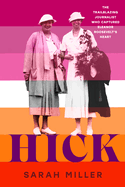
| Publisher: | Random House Studio | |
| Genre: | Biography & Autobiography, Women, General, United States - 20th Century, History, Juvenile Nonfiction, LGBTQ+ | |
| ISBN: | 9780593649091 | |
| Pub Date: | May 2025 | |
| Price: | $20.99 |
| Starred | Children's & Young Adult |
by Sarah Miller
Sarah Miller, author of Hanged!, pens an intriguing, engrossing young adult biography in Hick, about pioneering female journalist Lorena "Hick" Hickok. Miller, like her subject, "lure[s] readers in at the start and hold[s] them captive until the end" as she recounts Hick's life, her career, and her complex relationship with First Lady Eleanor Roosevelt.
Using a wealth of sources, including some 3,500 personal letters between Hick and Roosevelt, Miller details the trajectory of Hick's life, from a 14-year-old servant to "the first woman at the Associated Press whom editors 'trusted with straight news leads on big stories.'" Because Hick's editor "never hesitated to give her the best story that came along," the journalist was ushered into the world of the Roosevelts. Hick's assignment to cover the First Lady of New York as her husband campaigned for the White House became a deep friendship that blossomed into a love affair; their relationship withstood not only the test of time, but also the national spotlight.
Miller delivers a well-researched, fascinating biography of a person who played an important and uncommon role in U.S. history. The author gives a crystalline depiction of Hick's frustrations as a woman in a male-dominated field ("My God, how tired I get of being a woman reporter!") and viscerally portrays the struggles Hick and Eleanor experienced as women in a queer relationship under the blinding lights of national politics. Readers who enjoyed Most Dangerous by Steve Sheinkin or Amelia Lost by Candace Fleming will likely appreciate both Miller's writing and the extraordinary life of Lorena Hickok. Miller includes a note on language and the use of "queer," as well as extensive backmatter, an author's note, sources, and notes. --Jen Forbus, freelancer

| Publisher: | Peachtree Teen | |
| Genre: | Greek & Roman, Fantasy, Romance, Legends, Myths, Fables, Young Adult Fiction, Historical, LGBTQ+ | |
| ISBN: | 9781682637326 | |
| Pub Date: | June 2025 | |
| Price: | $19.99 |
| Children's & Young Adult |
by Cass Biehn
Vesuvius by Cass Biehn is a compelling YA historical fantasy debut brimming with political drama and queer love.
Sixteen-year-old Loren knows Pompeii will burn; he has visions of its destruction that feature a copper-haired young man. Then, 17-year-old Felix, the individual from Loren's visions, arrives in Pompeii and angers a power-hungry statesman by stealing a sacred helmet. Loren, thinking this an opportunity to change the city's fate, offers Felix protection while he attempts to understand the strange boy's role in Pompeii's demise. Felix, whose memories have been inexplicably blocked by some unknown force, typically trusts no one--especially not the rich. Loren, though, has yet to disclose his wealthy identity. He hopes to improve the Roman colony (once it's saved) by earning a seat on the council through his own merit. Even though Felix is caught off guard by "this mad, impulsive boy," he accepts--straying from Loren feels "like wading too far from shore." As politically motivated murders pile up and Vesuvius's eruption nears, the boys brave their uncertain future hand in hand.
This dual POV narrative combines a modern voice with a convincing historical backdrop, mythical undertones, and subtle magic. Biehn builds emotionally complex characters: Loren loves Pompeii "the way Icarus loved the sun. Bold. Bright. Willing to burn for it"; Felix resents his own significance, declaring, "I'm not Hercules. Or Achilles. I'm just Felix." Secrets and seedy politicians chase the protagonists to the eruptive climax. Biehn brilliantly pits choice against destiny in this exciting and immersive adventure. --Samantha Zaboski, freelance editor and reviewer
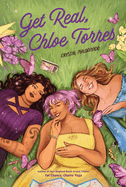
| Publisher: | Holiday House | |
| Genre: | Hispanic & Latino, Romance, Coming of Age, Young Adult Fiction, LGBTQ+ | |
| ISBN: | 9780823452378 | |
| Pub Date: | May 2025 | |
| Price: | $19.99 |
| Children's & Young Adult |
by Crystal Maldonado
Three ex-best friends reunite for one last pre-college adventure in this YA road trip novel full of laughter, healing, hijinks, and butterfly-inducing kisses.
Eighteen-year-old Chloe Torres isn't ready to be an adult. So, when she is gifted three tickets to her favorite band's reunion concert, she knows exactly who she wants to invite: her ex-best friends from middle school. Added bonus? They'll drive across the U.S. to get there and complete their old BFF bucket list along the way. It's a rocky start: Chloe tries not to think about the crush she had on Sienna or about the kiss she and Ramona shared at 14; meanwhile, Ramona and Sienna both have other motives for agreeing to this plan. After impromptu Niagara Falls and Indy Zoo visits, the girls hit a groove that might itself carry them to the concert. But the confusing moments Chloe has with Ramona--"she touched my elbow last night and i FELT THINGS????????"--kind of have her freaking out.
Get Real, Chloe Torres by Crystal Maldonado (Fat Chance, Charlie Vega) is a joyfully adventurous friendship story and a thrilling sapphic rom-com told in Chloe's charming first-person voice. Refreshingly, the girls avoid repeating their breakup mistakes by stopping to communicate when tensions soar. Maldonado is excellent at showcasing a teen doubting their college path ("Ever since I committed, it feels like there's been this cloud hanging over me.... Is that what I want to spend every day doing for my job?") and remarkably depicts ADHD, including time blindness and scatterbrained thoughts. All this, plus the breathtaking kisses, make it a validating story about queer love and joy. --Samantha Zaboski, freelance editor and reviewer
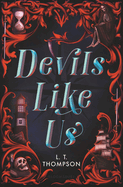
| Publisher: | Bloomsbury YA | |
| Genre: | Fantasy, General, Pirates, Young Adult Fiction, Historical, Action & Adventure, LGBTQ+ | |
| ISBN: | 9781547615193 | |
| Pub Date: | June 2025 | |
| Price: | $20.99 |
| Children's & Young Adult |
by L.T. Thompson
Devils Like Us by L.T. Thompson (The House That Whispers) is a sharply written, early-19th-century YA fantasy that follows three queer and trans teens as they uncover a magical secret society.
When Cas and best friend Remy were 10 years old, Remy's father went missing. Cas had a vision of Remy's father's death and told Remy, who ended their friendship. Cas's clairvoyant visions have been a secret ever since. Remy, meanwhile, has spent the past eight years investigating her father's disappearance with the help of her friend Finn; she believes the Order of Lazarus, a secret society focused on the supernatural and based at Eden, a seminary school in Maine, is responsible. The three teens are brought together when a friend of Cas's accidentally witnesses one of Cas's visions and is shipped off to Eden. Cas, Remy, and Finn launch a rescue mission that exposes mystical secrets and leads to personal revelations.
Magic and mysticism deftly share space with examinations of self in this gripping, profoundly insightful novel. The narration is divided among Cas, Remy, and Finn, all who struggle with identity issues. Trans Cas battles gender dysphoria while queer; Catholic Finn hides her "badness" from the world; and Remy, so wrapped up in her family's issues, hasn't felt "wild and invincible and free" in years. Thompson effortlessly twists their personal journeys into an adventurous plot without ever slowing the pace. Their self-explorations pair well with the occult mysteries, making for a dynamic, heartwarming first entry in Thompson's coming-of-age fantasy series. --Lana Barnes, freelance reviewer and proofreader